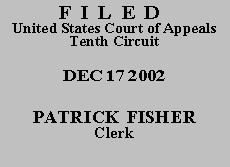

| UNITED STATES OF AMERICA,
Plaintiff-Appellee, v. DONALD L. ROURKE, Defendant-Appellant. |
|
Defendant Donald L. Rourke pleaded guilty to one count of possession of a firearm by a prohibited person in violation of 18 U.S.C. § 922(g)(1). He was sentenced to seventy months of imprisonment and three years of supervised release. On appeal, defendant argues that the district court erred in including his possession of a second firearm, for which he was not convicted, as relevant conduct for purposes of sentencing pursuant to U.S. Sentencing Guidelines Manual § 1B1.3(a)(2) (2001).
Defendant was originally charged in a four-count indictment. The facts relevant to the four counts are not disputed. Count I, possession of a firearm by a prohibited person, and Count II, possession of a stolen firearm, arose from defendant's possession of a firearm on April 30, 2001. Count III, possession of a firearm by a prohibited person, and Count IV, possession of a modified shotgun, arose from defendant's possession of a firearm on August 18, 2001.
Pursuant to a plea agreement, defendant pleaded guilty to Count III, and the remaining counts were dismissed.
On appeal, defendant argues that his possession of a firearm on April 30, 2001, was not "relevant conduct" for purposes of sentencing under USSG § 1B1.3(a)(2). Factual findings made at sentencing are reviewed under a clearly erroneous standard, and the district court's legal interpretation of the sentencing guidelines are reviewed de novo. United States v. Lambert, 995 F.2d 1006, 1008 (10th Cir. 1993).
In order for an offense to be considered "relevant conduct" for purposes of sentencing under USSG § 1B1.3(a)(2), three conditions must be satisfied:
First, there must be a finding that the offense in question involved conduct described in §§ 1B1.3(a)(1)(A) and (B). Second, the offense must be the type of offense that, if the defendant had been convicted of both offenses, would require grouping with the offense of conviction for sentencing purposes under U.S.S.G. § 3D1.2(d). Third, the offense must have been "part of the same course of conduct or common scheme or plan."
United States v. Taylor, 97 F.3d 1360, 1363 (10th Cir. 1996). Defendant does not dispute that the second condition has been satisfied in this case. Therefore, we will limit our analysis to the first and third conditions.
In order to meet the first condition, there must be a sufficient finding by the district court establishing that defendant "aided, abetted, counseled, commanded, induced, procured, or willfully caused" the offense in question, or that the acts or omissions were reasonably foreseeable acts or omissions of others in furtherance of a jointly undertaken criminal activity. USSG § 1B1.3(a)(1)(A) and (B). In the instant case, defendant does not dispute the fact that he committed the offense in question, i.e., illegal possession of a firearm on April 30, 2001, and the record supports this fact. Therefore, the first condition is satisfied.
The third condition is that the offense in question was part of the same course of conduct or common scheme or plan. In United States v. Roederer, we held that "'same course of conduct' . . . contemplates that there be sufficient similarity and temporal proximity to reasonably suggest that repeated instances of criminal behavior constitute a pattern of criminal conduct." 11 F.3d 973, 979 (10th Cir. 1993). In the instant case, the record supports the district court's determination that defendant's illegal possession of the firearms within a short period of time indicates that defendant was engaged in a pattern of criminal behavior. Therefore, the third condition is satisfied.
In conclusion, we hold that the district court properly interpreted and applied USSG § 1B1.3(a)(2) in determining that defendant's illegal possession of a firearm on April 30, 2001, was "relevant conduct." The judgment of the United States District Court for the District of Kansas is AFFIRMED.
Entered for the Court
Bobby R. Baldock
Circuit Judge
*. This order and judgment is not binding precedent, except under the doctrines of law of the case, res judicata, and collateral estoppel. The court generally disfavors the citation of orders and judgments; nevertheless, an order and judgment may be cited under the terms and conditions of 10th Cir. R. 36.3.